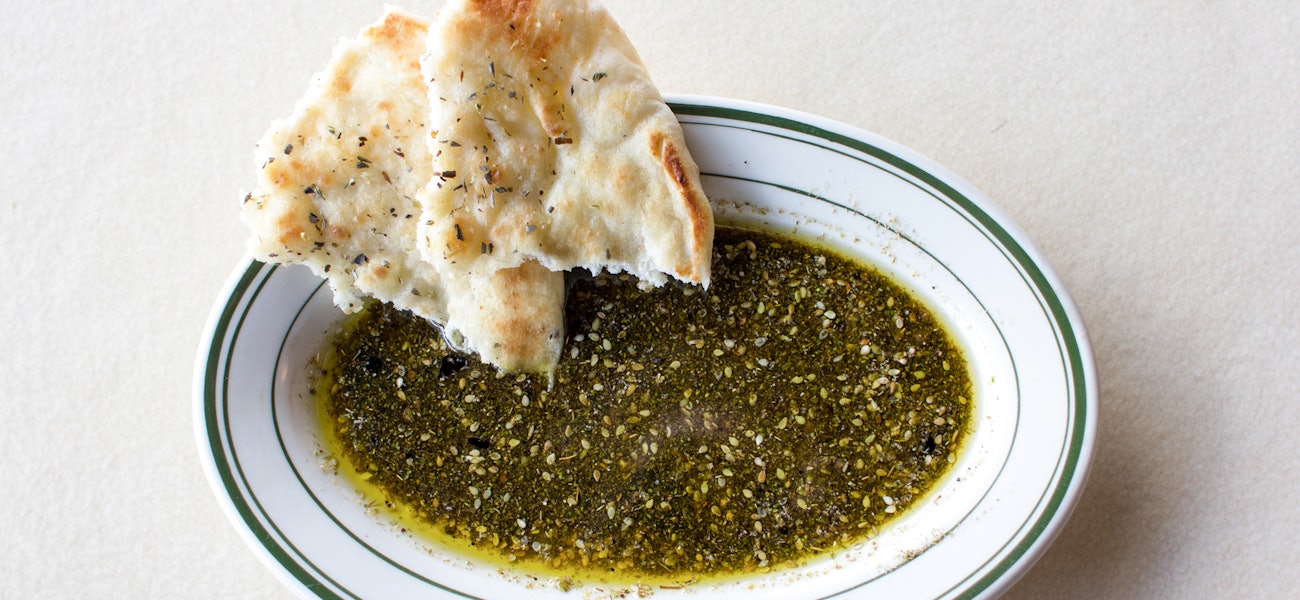What’s that spice?
The Middle Eastern staple zahtar is becoming mainstream
Even if you don’t know its name or where it comes from, there’s a good chance you’ve savored the spice blend zahtar. Earthy and fruity, zahtar usually comprises powdered sumac, dried thyme and sesame seeds. It’s fundamental to Middle Eastern cuisine and is a common accompaniment to pita bread. The local chain Roman’s Café features it in large tabletop jars, inviting customers to enjoy it as a complimentary starter.
“We began putting it on tables about 15 years ago,” says Roman’s Café co-owner Rafat Roman. “You sprinkle a little on the plate, add olive oil and a little bit of balsamic vinegar, and then you dip your pita in it.”
Zahtar, also spelled za’atar, is traditionally made and used by Middle Eastern home cooks, but lately, it’s also become a fashionable commercial ingredient. James Beard Award-winning New Orleans chef Alon Shaya, whose modern Israeli restaurant Shaya on Magazine Street has been stunning guests with nuanced cuisine, incorporates zahtar into a simple Israeli Salad of cherry tomatoes, cucumbers and parsley.
|
|
|
In Baton Rouge, Table Kitchen and Bar executive chef Kevin Dragon uses zahtar in dishes on the restaurant’s changing menu. Last fall, he featured it as a finishing spice in a North African-style roasted acorn squash, a vegan dish prepared with tahini and chermoula sauce.
“We wanted to push the flavor of the squash,” Dragon says. “I really like using zahtar, as well as sumac.”
Sumac is the finely ground dark purple spice that gives zahtar its signature exotic punch.
It’s used to dust the pickled onions served by many local Greek and Lebanese restaurants as a garnish with shwarma or kebabs. Sumac is also used in feta salad dressing.
Locally, you can buy zahtar and sumac in international markets, at Whole Foods or at Red Stick Spice Company.
“I think what you’re really tasting in zahtar, and what makes it so different and appealing, is the sumac, which has these really tangy, zesty and lemony notes,” says Anne Milneck of Red Stick Spice Company.
The shop’s version of zahtar is a blend of dried garlic, sesame seeds, citric zest, sumac, other spices and salt.
Milneck says she and her staff have been experimenting with zahtar and sumac lately as a growing number of customers ask how to use them.
“Your approach in using them in something like salad dressing should be toward a citrus end,” she says.
“So, for example, a vinaigrette would include olive oil, orange juice and zahtar.”
The two spices are great with mild-tasting meats, including boneless, skinless chicken breasts and pork tenderloin—sumac is a natural tenderizer.
|
|
|
They also enhance the flavor of wild ducks hunted in Louisiana, especially teal.
“Either in a quick sauté or in a long, slow cook, these spices are excellent for local ducks,” Milneck says.
“Pair the duck with lentils and basmati rice, and you’ve got an incredible meal.”





